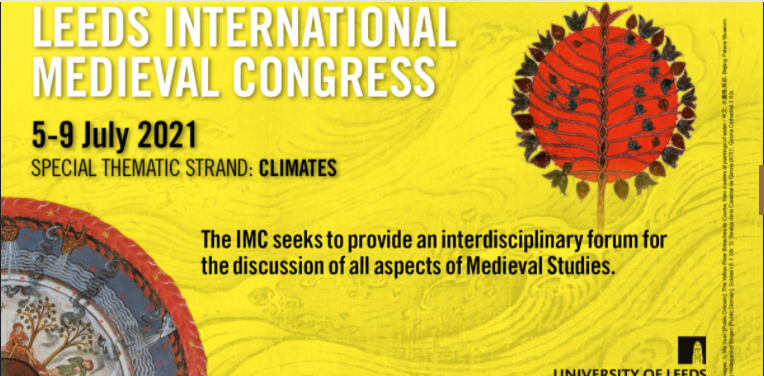The next American Society for Environmental History conference will be in San Francisco (USA) 12-16 March 2014. Unfortunately, premodern environmental history is woefully underrepresented on the program, with only one paper mentioning the medieval period in the title: Maïka De Keyzer, The disappearance of the tragedy of the commons. Sand drifts and collective action during the Late Middle ages in the Campine area, Southern Low Countries (on Panel 5-G).
Luckily, the 2nd World Congress for Environmental History in Portugal 8-12 July promises to make up for the ASEH’s paltry offerings. A review of the draft program yielded the following presentations on medieval environmental history:
8 July
Session: Wetland Cultures
Jim Galloway, Wetlands and Woodlands: Interactions around the Thames Estuary (SE England) in the Middle Ages
9 July
Session: Aquacultures: Promises, Practices, Problems, I
Richard C. Hoffmann, Domesticating Common Carp in Medieval Europe
Session: Comparative Fisheries
Antonio M. Teixeira & Cristina Brito, Digging into our Whaling Past Portugal (Mainland) as a Former Whaling Nation
Session: Coping with Pests
Elina Gugliuzzo & Giuseppe Restifo, Locust Invasions and Climatic Factors in the Mediterranean
Session: European Animals — Real and Imagined
Rob Lenders, “An Hund Wildra Horsa and Sextene Tame Hencgstas†– The Myth of wild Horses in Medieval Europe
Hannele Klemettila, “Qu´on ne les Tuast pas Faussementâ€. Gaston Fébus on the Decline of Wild Life at the End of the Middle Ages
Session: Changing Views of Primates
Catarina C.N. Casanova & CecÃlia Veracini, Animal Distribution in Guinea-Bissau and how Non Human Primates Were Perceived in the 16th and 17th Century Chronicles: From Anatomical Descriptions to Tool-use Behaviour
Session: Program Committee Selection
Francis Ludlow, The Environmental Contexts of Subsistence Crises, Mass Mortalities and Social Conflict in Ireland, 425-1649 CE
Session: Ligurian Landscapes: 20 Years of Interdisciplinary Case Studies
Charles Watkins, Ross Balzaretti & Diego Moreno, Historical Rural Landscapes in the Apennines and Climate Changes
10 July
Session: Fueling Pre-modern Economies: Energy Production and Consumption before the Industrial “Revolutionâ€
Rick Keyser, Wood for Burning: Firewood Production and Collection in Medieval France
Session: The Socio-political Leverage of Extreme Weather Events in Late Medieval Europe
Martin Bauch, More than Divine Wrath – Perception of Extreme Weather Events in Late Medieval Italy
Thomas Labbé, “Toute Chose se Desnatureâ€: Environmental Changes of the 14th Century from the Perspective of Contemporary Witnesses (c. 1330-1400)
Linnéa Rowlatt, Some Religious Perceptions of Nature in Late Medieval Alsace
Session: Ways as a Means of Space Exploration
Irina Konovalova, Route Data as a Tool of Describing the World in Islamic Geography of the Ninth and Tenth Centuries
Tatjana N. Jackson, Ways (Vegar) of Medieval Scandinavians
Galina Glazyrina, The Way as a Representation of Moral and Ethical Transformations in the Icelandic Sagas
11 July
Session: Poster Presentations
Pavel Raska & Vilem Zabransky, A Central-European Perspective on the Learning-through-the-Past Paradigm in Disaster Studies
Renata Pavelkova Chmelova & Jindrich Frajer, Extinct Ponds in tbe Czech Republic
Session: Urban Farming throughout History – Part 1: More than Shovels, Henhouses and Seed: Urban Farming as a Promoter for Structural and Cultural Change from the Middle Ages to the 20th Century
Dolly Jørgensen, Foul Fowl: The Challenges of Keeping Birds in Medieval Urban Spaces
Chantal Camenisch, Cabbage, Beans and Apples: Agricultural Production within the City Walls in the Western Part of the Swiss Confederacy during the Late Middle Ages and the Early Modern Period
12 July
Session: Marine Cultural Environments
Eva Panagiotakopulu, Medieval Cultural Landscapes: Interaction and Subsistence in the North Atlantic Region
Session: Changing Coastlines. The Impacts of Human Activities in Coastal Zones
Maria Rosário Bastos, Olegário Pereira, Sérgio Rodrigues, João Pedro Tereso, & João Pedro Ribeiro, Vegetation in the Portuguese Coastal Interface in a Broad Diachronic Perspective. Case Studies from the West Coast, near the Aveiro Lagoon
Session: The Four Horsemen of the Apocalypse: Pestilence, War, Famine and Death
Richard D. Oram, Timor Mortis Conturbat Me: Death and the Scots c.1350-1500
Alasdair D. Ross, Verus Valor: A Mid-14th Century Scottish Reaction to One or Two (or all) of the Four Horsemen?

